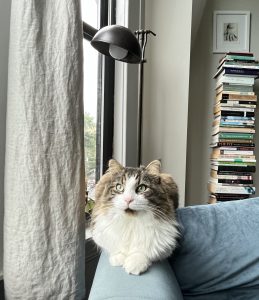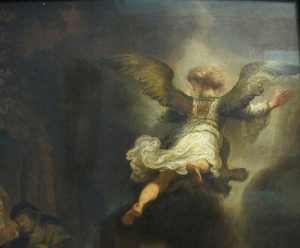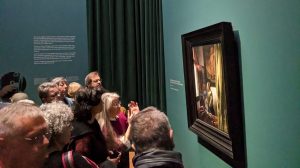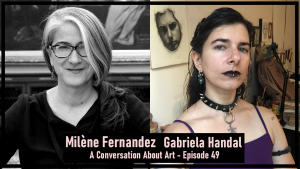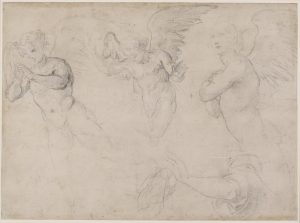
At the sight of Beauty, the soul grows wings.
—Plato, Greek philosopher (428—348 BC)
Beauty kindles love, humility, compassion;
As a central source of joy, beauty engenders morale.
Above all, beauty reflects the divine.
If I would expand on the meaning of beauty in a treatise, you might agree with my words. But if later I would show you examples of art that I find beautiful, I’ll risk disappointing you. My aesthetic taste might overlap a with yours, but it won’t coincide exactly. Your disappointment would affirm the tired cliche: “beauty lies in the eye of the beholder.” It’s the common understanding of our day. What you find beautiful I might find ugly or vice versa. That is very possible. Yet, while everybody is different and perceives beauty differently, it’s hard to imagine someone who would not find a sunset beautiful.
Beauty is not relative. It may seem to be so because the degree to which we are able to recognize it is subjective. If we imagine Beauty as an infinite, indestructible value existing beyond time and space, in that case it would be objective. Yet, we would not dare to claim absolute knowledge of it because accessing beauty is a transcendent experience.
It depends on our state of mind, character, sensitivity, and, above all, on our virtue. The level of refinement of beauty that you may be able to recognize may correlate with the volume of virtue that permeates your being at any given moment. This is why we are very likely to disagree on what we consider beautiful.
The connection between our ability to recognize beauty and our virtue—between aesthetic judgment and morality—has been dismissed even before the turn of the twentieth century. Nevertheless, just because we have ignored that connection, does not mean that it is no longer valid or meaningful.
For the sake of human conviviality, for kindness, it’s important to understand and re-acknowledge that connection. Our level of innocence and open heartedness determines the depth and extent of our appreciation of Beauty.
We delight in seeing the face of a newborn baby, finding beauty in that moment, because it reminds us of innate innocence.
As humans we need beauty in our lives. It brings us joy, makes life meaningful, and it ennobles us. This is why the loss of beauty is tragic. Once, when I asked an elderly lady to recall the original Pennsylvania Station in New York City, which was even more grand than Grand Central Station, built in 1910 and destroyed in 1963, I saw tears welling up in her eyes. The architectural historian Vincent J. Scully Jr. summed up the difference between the original and the current Penn Station best: “One entered the city like a god; one scuttles in now like a rat.” Surely, the 600,000 passengers going through the busiest transportation hub in the Western Hemisphere don’t want to feel like rats before boarding a train.

Once I lamented to an acquaintance about how I wish for the original Penn Station to be rebuilt. He said he would find it intimidating. I thought maybe he associates the Beaux Art style of architecture beyond his class, but such architecture is designed with the intention of ennobling everyone. Maybe he thinks of it as unnecessary luxury, but cheaply-built, ugly buildings are expensive because they eventually have to be torn down and replaced. And also, why then do so many people enjoy Grand Central Station? Beauty is neither luxury nor indulgent. Beauty is necessary. We witness it in nature. Even a bird builds its nest beautifully—witness the bowerbird.
I admit, I have enjoyed the charm of New York City’s grime for its unpretentiousness, but that thought carries self-deprecation. You have to be feeling pretty low about yourself, or desensitized, if the ugliness of the current Penn station or the smell of ‘dumpster juice’ in some corners of the city doesn’t disgust you. In contrast, when we are living congruently with our values and our aspirations, it’s much easier to feel worthy of living in a beautiful environment.
We can have deeper experiences, recognizing beauty more, in seeking to be good and true to ourselves and to others. This is why our aesthetic taste is so personal. This is why we feel vulnerable when we point out something we find beautiful. We might feel embarrassed if someone we admire doesn’t agree with our aesthetic taste.
Whereas Beauty reveals itself to us in degrees, depending on our state, our receptivity to it varies. On a day when I’m feeling melancholic or horrific, I might find dark, muddy-looking paintings (e.g., Francisco de Goya’s 14 Black Paintings, 1819–1823) especially appealing. Conversely, on a day when I’m feeling grateful, a painting by Raphael will speak to me. Or on a day when I’m feeling serene and dreamy, maybe a landscape painting by George Inness (1825–1894) opens a door to a deeper sense of communion with the beauty of nature.
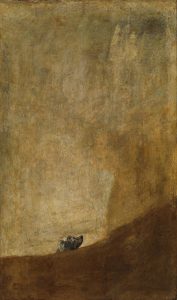

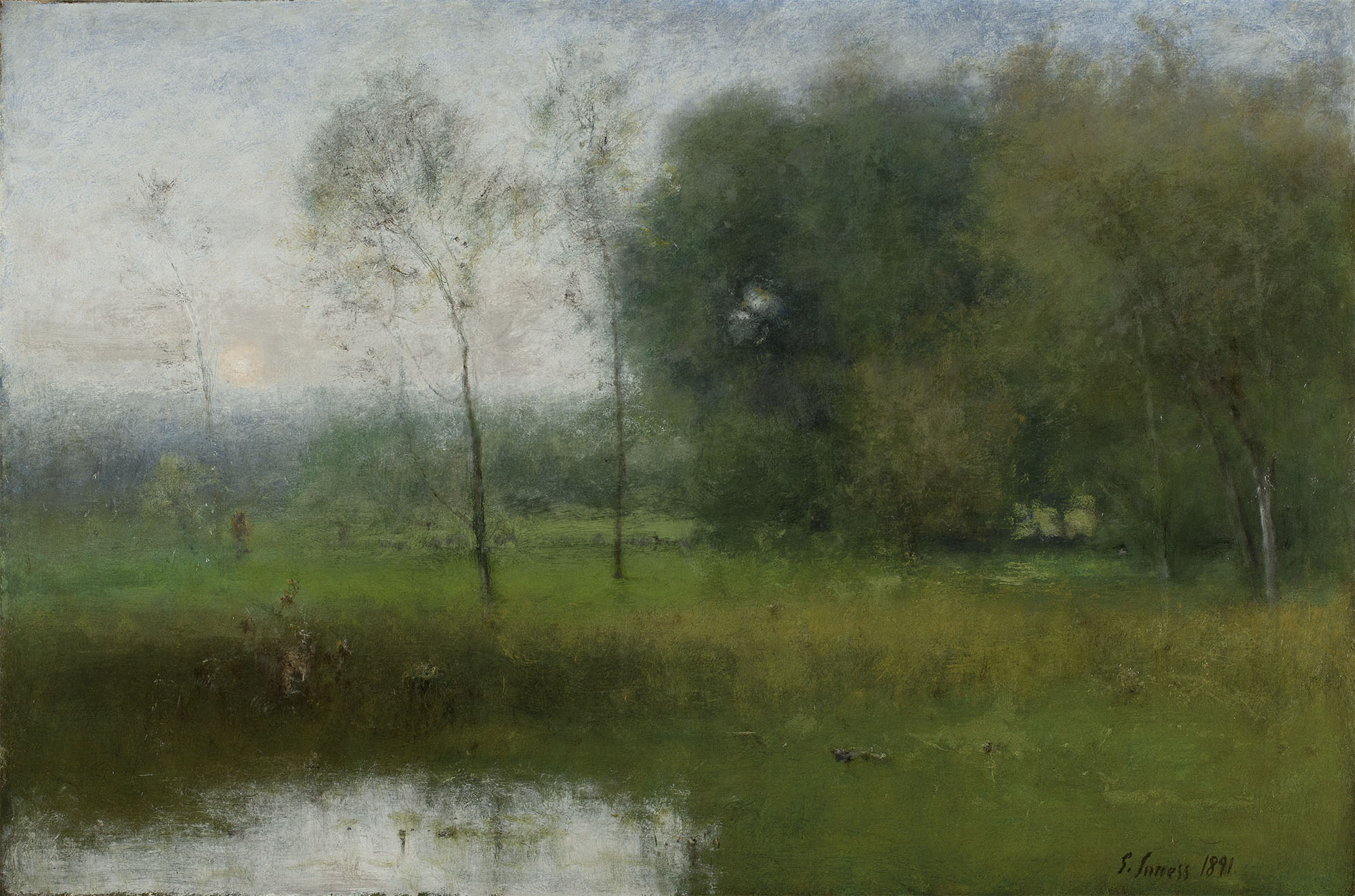
Sadly, some highly skilled artists have felt the pressure to follow the contemporary art trends of today—with its call for irony, snarky content, verging on the pornographic—to sell their works. In this sense they are going along with the current, mirroring the low morale of the general mainstream contemporary art scene, instead of having the courage to be sincere, to heed the call of beauty, and lead the way for others to find beauty. On another extreme, some artists pride themselves too much on displaying high skill for its own sake without any thought to what they actually want to communicate. The form of their work might look ‘perfect’ but it lacks ‘soul.’ Sheer technical mastery does not guarantee a work of art will be deemed beautiful.
As the late Sir Roger Scruton pointed out in his book, Beauty, “There’s a great difference between the artistic treatment of a subject-matter and the mere cultivation of effect.” Beautiful art is skillfully made, and its inner bearing and message is as profound as the technique used to create it. The traditional dance of Shen Yun Performing Arts is a good example of such ideal balance and grace.
“Our favorite works of art seem to guide us to the truth of the human condition and, by presenting completed instances of human actions and passions, freed from the contingencies of everyday life, to show the worthwhileness of being human.”
— Sir Roger Scruton
Beauty is Infinite and Indestructible
With only nine words—capturing a potent part of Socrates’ dialogue with Phaedrus more than 1661 years ago—Plato encapsulates the meaning of beauty with a capital B:
“At the sight of Beauty, the soul grows wings.”*
Now, if you are someone who does not believe in having a soul, even less so in winged human figures among us, let me ask you this: Have you ever felt as if time stopped upon seeing something beautiful? Or have you ever seen someone so beautiful that they took your breath away? At that moment, did you feel paralyzed or consoled? Did you feel heavier or lighter? The nuances could be endless.
Beauty is difficult to define. We can share experiences of recognizing beauty with a capital B, but it feels impossible to give a definitive answer. It’s like how difficult it is to define truth with a capital T because Truth and Beauty are so closely entwined that they might seem to be the same, as Keats wrote:
“Beauty is truth, truth beauty—that is all. Ye know on earth, and all ye need know.”
—John Keats (1795–1821).
It’s easy to conflate beauty with truth because Beauty reveals itself only in authenticity. Someone may fit every description of the standards of beauty of the day, with perfect proportions and symmetrical features, etc., but, for example, as soon as you realize they are a pathological liar, they lose all powers of admiration or persuasion. Beauty leaves them fast; their physical appearance becomes superficial, hollowed out of any depth of character. Or an uncomfortable, confusing dissonance is created in your mind in having difficulty in reconciling the physical beauty with the ugly character. Conversely, we love art that seems to emanate beauty from within, like a Rembrandt portrait. We love knowing someone who is both “beautiful inside and out,” as we say.
“Beauty is how you feel inside, and it reflects in your eyes. It is not something physical.”
—Sophia Loren.
When we recognize something that is truly beautiful—including and beyond superficial appearances—and we give it our full, focused attention, it’s as if we are presented with a bread-crumb trail to the divine. In other words, our souls begin to “grow wings.” Perhaps for just a few seconds, we transcend the mundane world and get a little glimpse of the truth of the universe. We get a little bit closer to understanding who we truly are and why we exist.
“Some things can be approached only with great reverence, for it is only then that they disclose themselves to us as they truly are. One of these is beauty.”
— Dietrich von Hildebrand, Aesthetics (vol 1)
A friend† of mine once struggled to describe a woman he had trouble working with in his office. He simply said, “She is so beautiful, it hurts!” His remark intrigued me for years until I read Plato’s nine words (in the Phaedrus*). Beyond the physical attraction he felt towards her, he later explained, it was painful for him to look at her because her beauty revealed to him his shortcomings. He had the strength to look inside himself and recognize how he could improve. Instead of letting her beauty pain him because he could not possess it, ideally her beauty could inspire him to become a better version of himself. It could ennoble him.
At the sight of beauty, we become contemplative. We don’t think about the past or the future. We become present. When Beauty meets us, we expand with enthusiasm.
Some years ago, I decided to learn cast drawing—a very methodical academic drawing practice—as a part-time student at Grand Central Atelier, so that I could better understand a technique of traditionally trained artists. Before deciding on what cast to draw, a friend advised me to pick something beautiful so that it would motivate me through the arduous learning process. I chose a mask of Michelangelo’s sculpture of Giuliano de’ Medici (1479-1516), which spurred me to continue drawing it every Sunday until I completed it over a year.
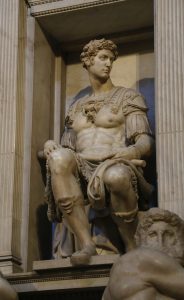
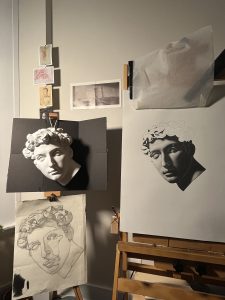

Beauty is usually present when we feel inspired. It’s the ideal state for an artist to be in while creating. The best artists don’t wait for inspiration. They show up in their studios with an open heart, patiently trusting their process, and maybe Beauty shows up to guide their hand. Beauty rejoices in seeing their willingness to look inside, to improve themselves, overcome their doubts, their shortcomings, and strive to do better, to create beautiful art.
Beautiful art is indeed skillfully done, but it is beautiful because it was inspired by Beauty with a capital B.
Artists in general are usually more sensitive and receptive to Beauty. Often, their vocation feels inevitable, as Beauty haunts them until they pay heed to the call to draw, paint, carve, sculpt, sing, act, film, dance, etc. the beauty they perceive. In this sense artists become ambassadors of Beauty. With every beautiful drawing, painting, sculpture, etc. that they make, they create a unique ‘bread crumb’ in the bread crumb tail to the divine. “Your mind and your imagination and your spirit is hopefully charged in the making of an object,” the artist, Jacob Collins said, the first time I interviewed him. In that way, the viewer of the painting can experience that beauty.
When artists are sincere while working, they set in motion a virtuous cycle, at best between divine inspiration, beauty, and the viewer of the work of art created. The viewer in turn can increase their appreciation of art, through curiosity and open heartedness.
Another very successful artist I interviewed, Mario Robinson said that he cannot paint when he’s upset. He only paints when he’s feeling good. He does not paint someone unless he can have a meaningful relationship with that person. This is what makes art worthy—meaningful experience, infused with beauty in material form, preferably for many people to contemplate and enjoy.
There’s simplicity in Beauty in its transparency, in its sheer authenticity, as in a moment of surrender.
I named my cat Plato so as to remind me that there are forms of ideal beauty that we cannot easily access—forms which reside beyond our everyday perception. It’s only when we look within to improve our own character that we can elevate in being true to ourselves and to others, that we are visited by Beauty and get a glimpse into the divine.
Beauty Kindles Love
We often love because of beauty. The natural, unselfconscious beauty of my cat Plato, for example, elicits my love for his being, for nature, which extends towards existence itself. Nature is a salient bearer of beauty. Its authenticity is unquestionable. But what of the questionable beauty of a fully lived life—with its inevitable hardships, profound experiences, and joys? What of a good conversation unfolding or the awakening of love for another person? These are human bearers of beauty, with far more complexity than that of a cat.
Regardless of superficial appearance or age, a person’s inner bearing makes all the difference. It’s somewhat analogous to when you place a box underneath a piece of cloth, the cloth looks cube-like; or when you put a ball underneath the cloth, the cloth looks like a sphere. When someone is kind, they will always look more beautiful than when they are mean.
What would happen if all of the good and noble qualities of someone you love would be taken away? Would you still find them beautiful? I would say, probably not. Beauty is paramount for love. And through loving, we become so much more conscious of every bearer of beauty in the fabric of life. Our soul grows wings. We may take flight in a virtuous cycle, as one who recognizes beauty is enkindled to love and becomes more lovable and beautiful in the act of loving.
______
*Plato: “At the sight of Beauty, the soul grows wings.”
†The late Mike Stone, Former Senior Adviser to the Representative on Freedom of the Media at OSCE — The Organization for Security and Co-operation in Europe, Vienna, Austria.
